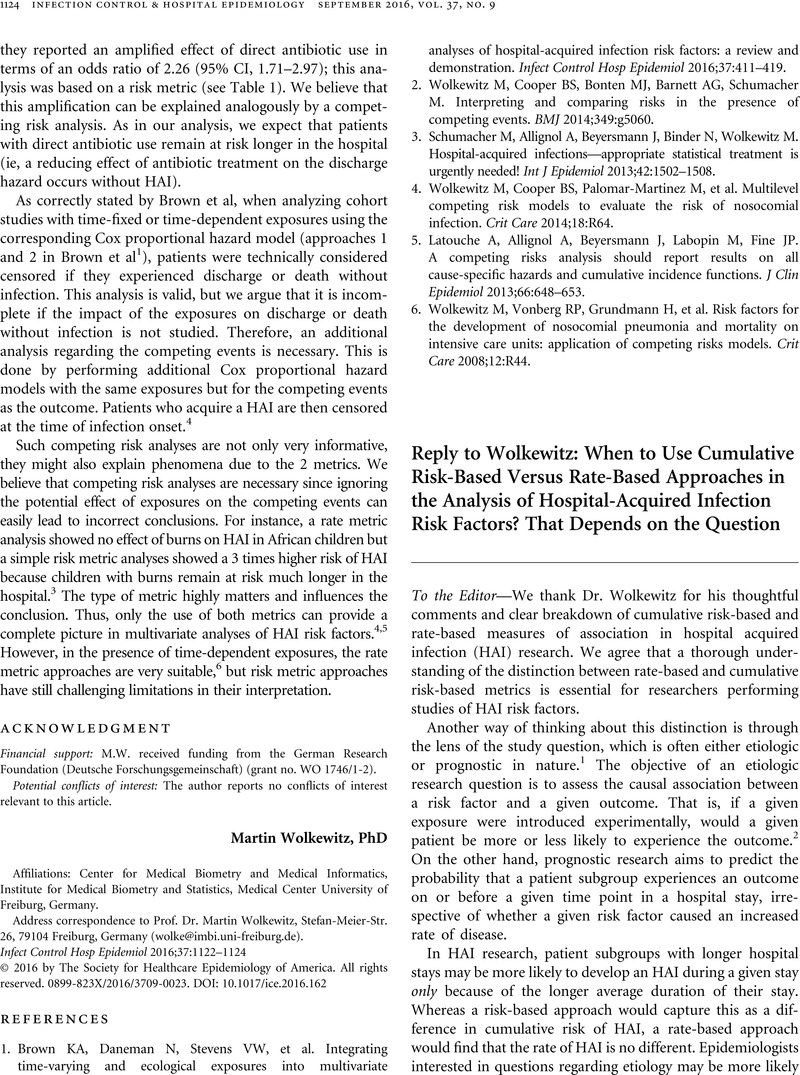No CrossRef data available.
Article contents
Reply to Wolkewitz: When to Use Cumulative Risk-Based Versus Rate-Based Approaches in the Analysis of Hospital-Acquired Infection Risk Factors? That Depends on the Question
Published online by Cambridge University Press: 26 July 2016
Abstract
An abstract is not available for this content so a preview has been provided. Please use the Get access link above for information on how to access this content.

- Type
- Letters to the Editor
- Information
- Copyright
- © 2016 by The Society for Healthcare Epidemiology of America. All rights reserved
References
REFERENCES
1.
Noordzij, M, Leffondre, K, van Stralen, KJ, Zoccali, C, Dekker, FW, Jager, KJ. When do we need competing risks methods for survival analysis in nephrology?
Nephrol Dial Transpl
2013;28:2670–2677.Google Scholar
2.
Little, RJ, Rubin, DB. Causal effects in clinical and epidemiological studies via potential outcomes: concepts and analytical approaches. Annu Rev Public Health
2000;21:121–145.Google Scholar
4.
Brown, KA, Daneman, N, Stevens, VW, et al. Integrating time-varying and ecological exposures into multivariate analyses of hospital-acquired infection risk factors: a review and demonstration. Infect Control Hosp Epidemiol
2016;37:411–419.Google Scholar
5.
Brown, KA, Jones, M, Daneman, N, et al. Importation, antibiotics, and Clostridium difficile infection in veteran long-term care: a multilevel case–control study. Ann Intern Med
2016;164:787–794.Google Scholar




